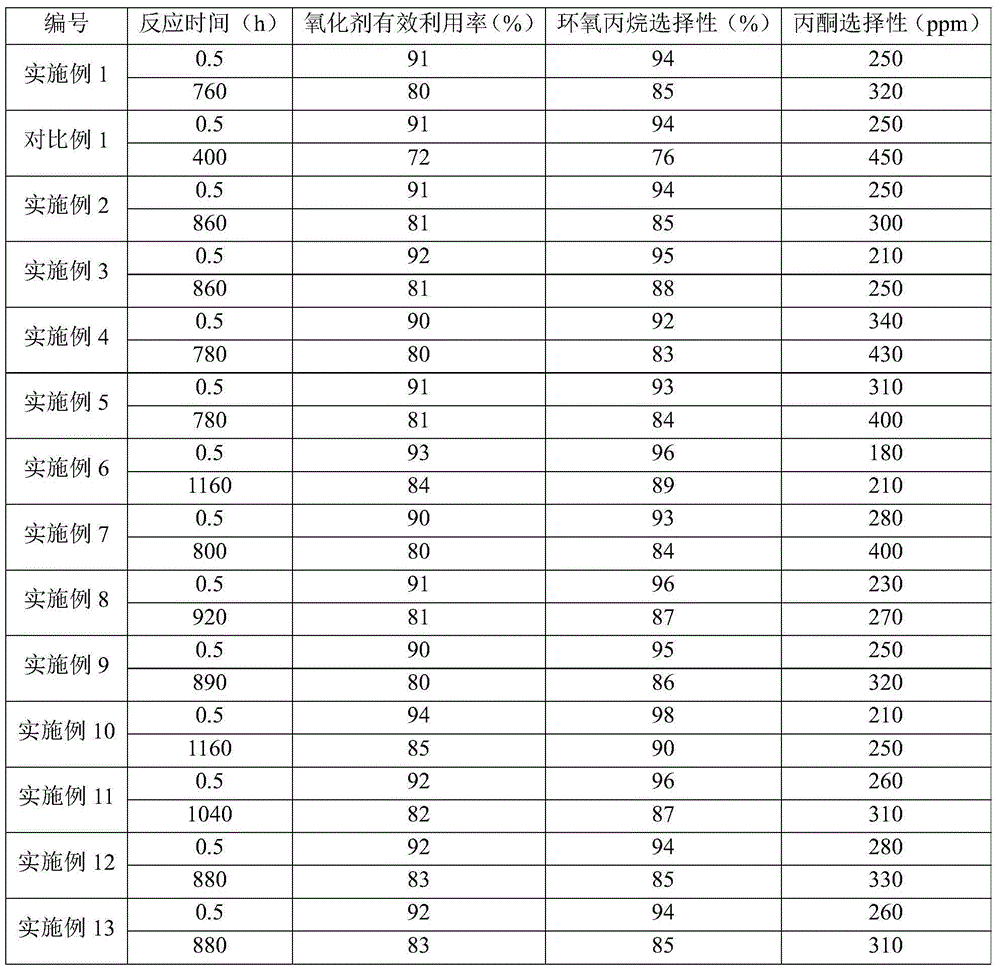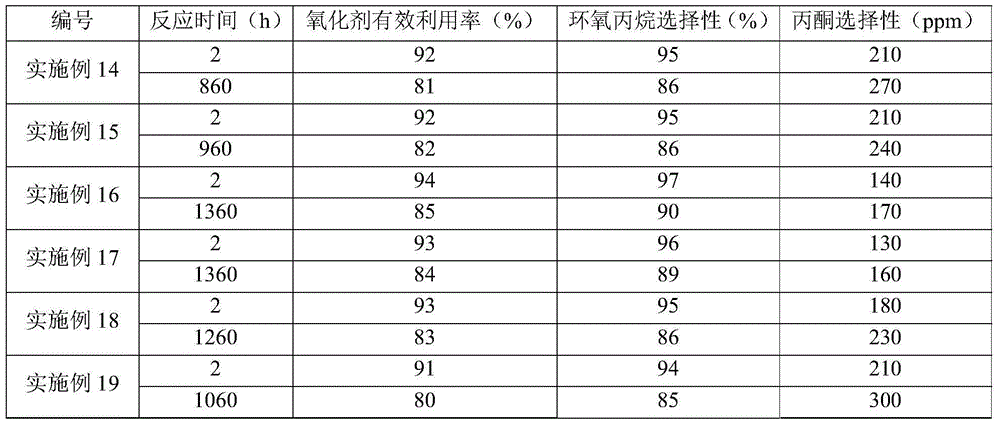Oxidation method for olefin
A technology of olefins and oxidants, applied in chemical recovery, organic chemistry, etc., can solve the problems of catalyst activity and selectivity reduction, catalyst deactivation, catalyst activity and selectivity fluctuations, etc., to reduce regeneration frequency and prolong single-pass use Life and the effect of extending the stable operation time
- Summary
- Abstract
- Description
- Claims
- Application Information
AI Technical Summary
Problems solved by technology
Method used
Image
Examples
Embodiment 1
[0080] The catalyst (that is, shaped titanium-silicon molecular sieve TS-1, a spherical catalyst with a volume average particle diameter of 500 μm, the content of titanium-silicon molecular sieve TS-1 in the catalyst is 80% by weight, the content of silicon oxide is 20% by weight, and the density is 0.76 g / cm 3 ) is packed in a fixed-bed reactor to form a catalyst bed, wherein the number of the catalyst bed is 1 layer.
[0081] A liquid mixture of propylene, hydrogen peroxide (provided in the form of 30% by weight hydrogen peroxide) as oxidant, methanol and aqueous ammonia (25% by weight) as solvent was fed from the bottom of the fixed bed reactor and passed through Catalyst bed. Among them, the molar ratio of propylene to hydrogen peroxide is 3:1, the molar ratio of propylene to solvent methanol is 1:20, the amount of ammonia water makes the pH value of the liquid mixture 8, and the weight hourly space velocity of propylene is 4h -1 . The initial feed temperature of the li...
Embodiment 2
[0088] Adopt the same method as in Example 1 to oxidize propylene, the difference is that during the reaction process, when condition 1 is met for the first time, the temperature of the liquid mixture is increased by 0.02-2°C / day until condition 2 is met, and the increase is stopped. the temperature of the liquid mixture and keep it at the raised temperature; when condition 1 is met for the second time, increase the quality of hydrogen peroxide in the liquid mixture in the range of 0.02-2% / day (by increasing the hydrogen peroxide in hydrogen peroxide). The concentration of hydrogen peroxide is realized, and the consumption of hydrogen peroxide is reduced correspondingly, to keep the mol ratio of hydrogen peroxide and propylene constant) until condition 2 is met, stop improving the quality of hydrogen peroxide in the liquid mixture and keep it as the numerical value after raising, according to this By analogy (that is, when condition 1 is met for the odd number of times, the tem...
Embodiment 3
[0091] Adopt the same method as Example 2 to oxidize propylene, the difference is that the titanium-silicon molecular sieve TS-1 in the catalyzer is replaced with an equivalent amount of hollow titanium-silicon molecular sieve (that is, the hollow titanium-silicon molecular sieve is molded, and the density of the catalyst is 0.70g / cm 3 ).
[0092] The reaction was carried out for 860 hours. At the end of the reaction, the feed temperature of the liquid mixture was 41° C., and the concentration of hydrogen peroxide in the hydrogen peroxide was 39% by weight. The results of 0.5 hours and 860 hours of reaction are listed in Table 1.
PUM
| Property | Measurement | Unit |
|---|---|---|
| length | aaaaa | aaaaa |
| adsorption capacity | aaaaa | aaaaa |
| density | aaaaa | aaaaa |
Abstract
Description
Claims
Application Information
 Login to View More
Login to View More - R&D
- Intellectual Property
- Life Sciences
- Materials
- Tech Scout
- Unparalleled Data Quality
- Higher Quality Content
- 60% Fewer Hallucinations
Browse by: Latest US Patents, China's latest patents, Technical Efficacy Thesaurus, Application Domain, Technology Topic, Popular Technical Reports.
© 2025 PatSnap. All rights reserved.Legal|Privacy policy|Modern Slavery Act Transparency Statement|Sitemap|About US| Contact US: help@patsnap.com



